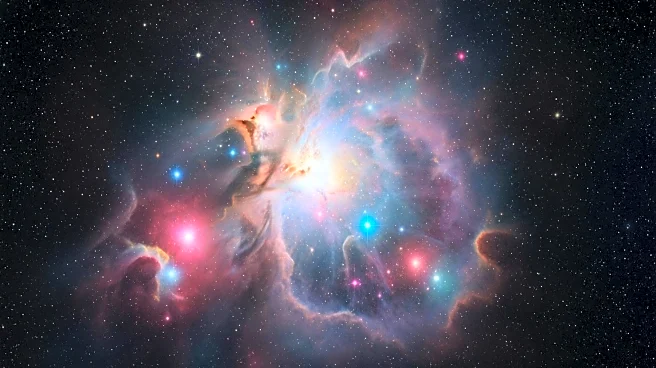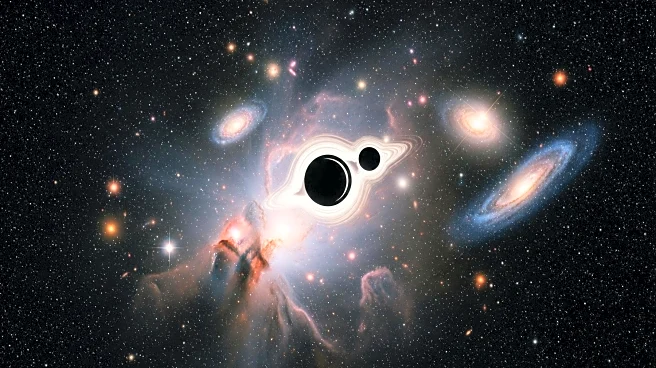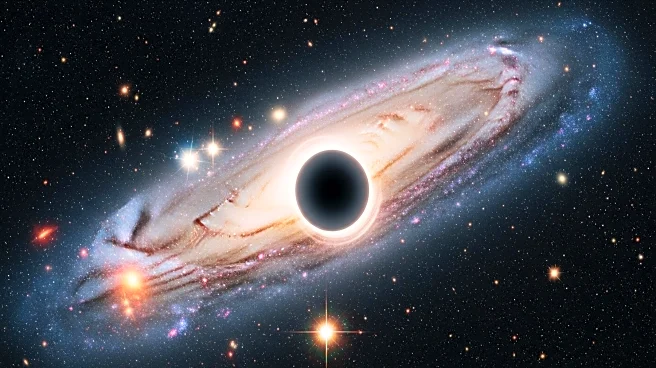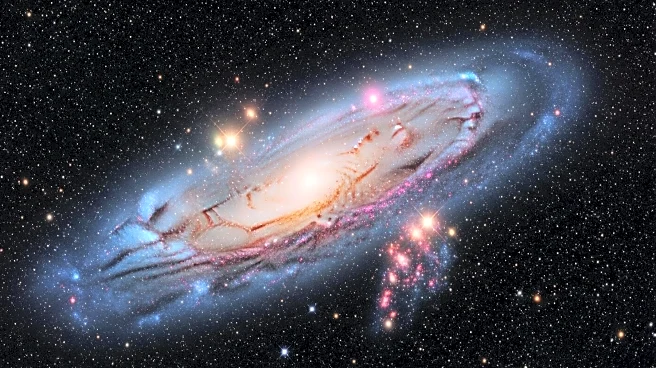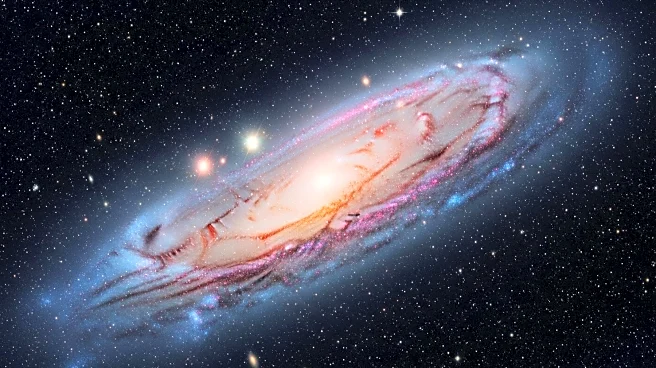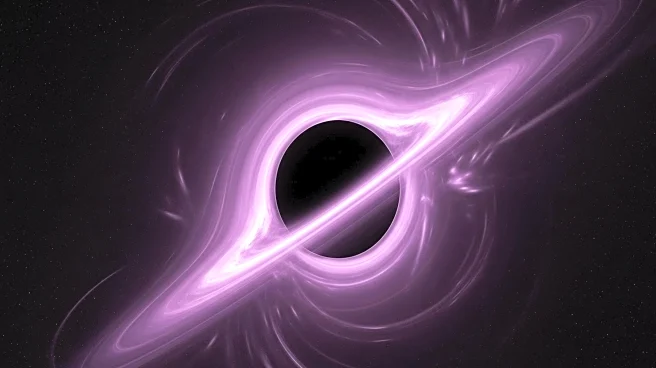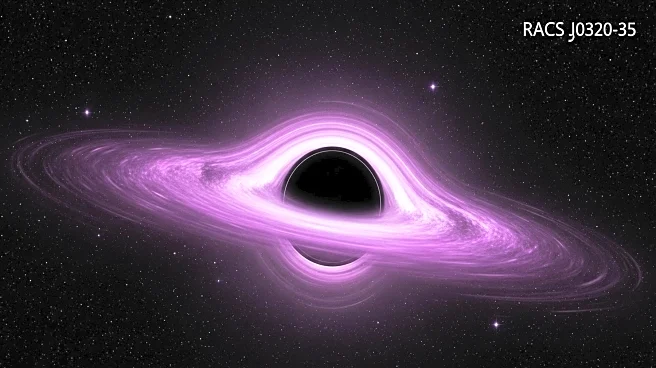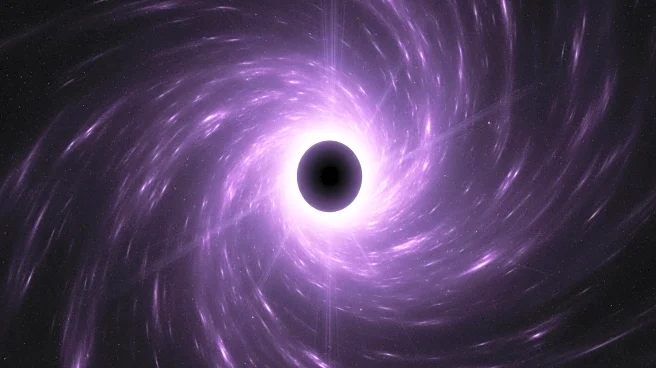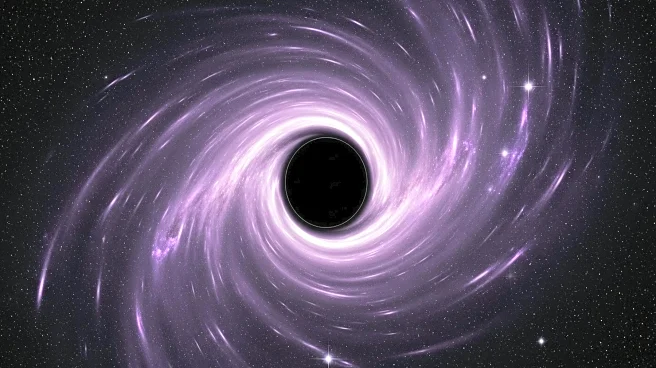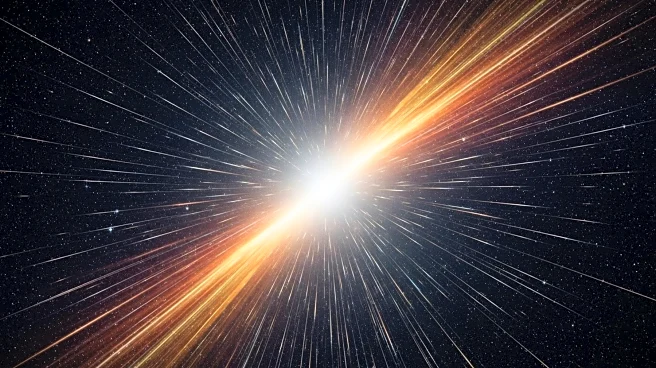What's Happening?
Researchers have developed a theoretical model called the 'black hole star' to explain mysterious light sources in the early Universe, known as 'little red dots' (LRDs). These objects, such as one nicknamed 'The Cliff,' may be supermassive black holes enveloped in dense gas clouds, rather than traditional galaxies. This model addresses the strong Balmer break observed in these LRDs, which suggests a population of A-type stars that should not exist so early in the Universe's history. The 'black hole star' model posits that these are not galaxies but rather black holes surrounded by hydrogen gas, mimicking the appearance of older stellar populations.
Why It's Important?
This new model challenges existing cosmological theories by suggesting that some early Universe objects are not galaxies but black holes with unique characteristics. If proven, this could reshape our understanding of cosmic evolution and the formation of galaxies. It also highlights the need for further research to confirm the existence and properties of these 'black hole stars,' potentially leading to significant advancements in astrophysics and our comprehension of the Universe's history.
What's Next?
Further research is required to validate the 'black hole star' model and understand its implications. Scientists will likely conduct more observations and simulations to explore how these objects form and evolve. The findings could influence future studies on galaxy formation and the role of black holes in the early Universe.

